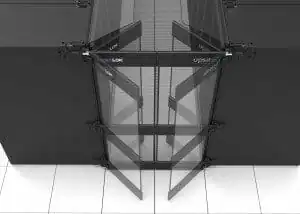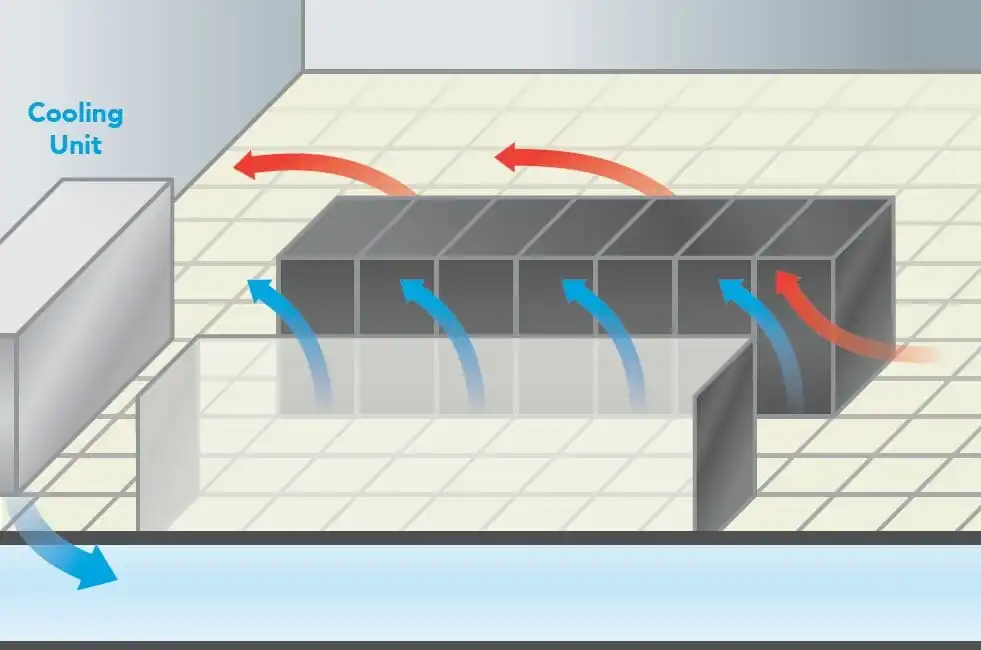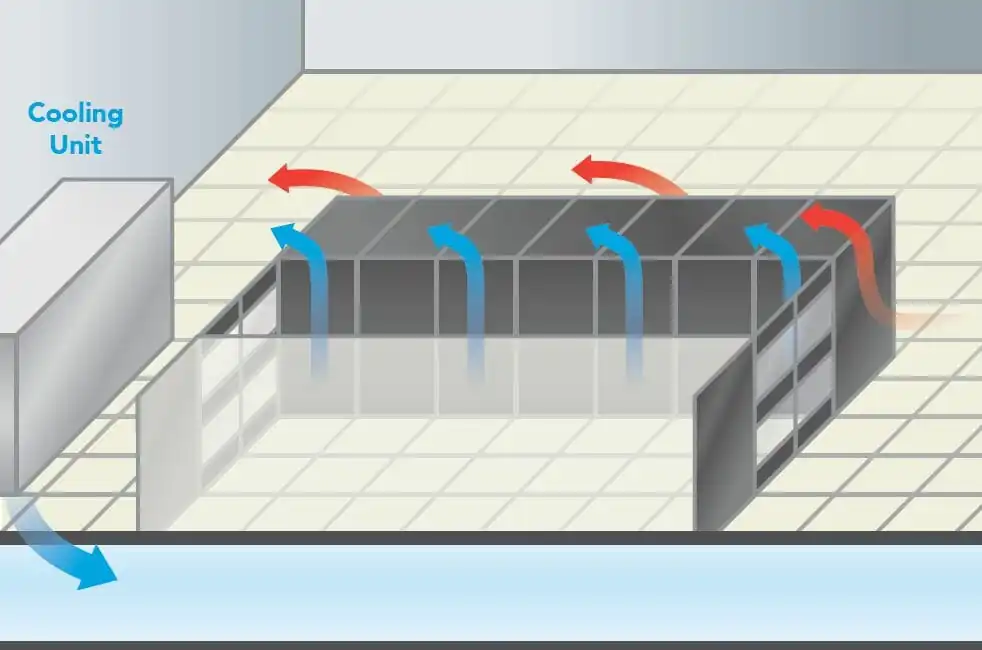The Importance of Sealing the End of the Aisle9 min read

As we all know, data center needs are continuing to change and evolve, and with it, so is the way you cool your data center. Naturally, airflow management is largely affected by this, resulting in new ideas and perspectives on the most effective ways to manage airflow. One of the newer ideas talked about around the industry lately is sealing the end of the aisle with containment doors, and whether or not it is effective as a stand-alone initiative without full containment. Some have referred to this as the ‘bath-tub’ concept, where just sealing the ends of a hot or cold aisle creates a contained pool of hot or cold air that immediately reduces recirculation.
But before we get into this, one thing to understand is that the goal of all airflow management initiatives is to improve the intake air temperatures to IT equipment. More specifically, to reduce the highest intake air temperatures so that all intake temperatures are as low and even as possible. This, in return, enables changing the control of cooling infrastructure to improve efficiency and increase capacity. In order to achieve these goals, there are many steps along the way that need to be taken in order to optimize airflow and thermal management. One thing to keep in mind is optimization is a process, not an event. Our 4 R’s Methodology provides a protocol to follow in order to achieve this process. Just as a reference, the 4 R’s are: 1. Raised Floor, 2. Rack, 3. Row, and 4. Room.
The topic at hand, sealing the end of the aisle, falls under the third R, to ensure hot and cold aisle separation at the “Row” level. Once the first R is taken care of by sealing unmanaged openings and properly locating all perforated tiles, and the second R is taken care of by installing blanking panels and sealing all other openings in vertical plane at the face of IT equipment intakes, then the next most effective step to implement is containment doors at the ends of aisles. Due to the fact that cabinets at the ends of rows are the most vulnerable to increased intake temperatures because of the potential for hot exhaust air to wrap around the ends of the rows, this is more of a priority than you may think.

Figure 1
When cooling units are along a wall perpendicular to the rows of IT cabinets (a best practice for preventing hot air from causing problems at the tops of cabinets) the conditioned air supplied to the aisle often turns and flows back to the cooling unit. This may cause a problem at the end closest to the cooling unit, but more often causes problems at the opposite end of the row where hot air is pulled in to the cold aisle ((See Figure 1)). To combat this condition, additional perforated tiles are often placed at the ends of the rows. While this method does mitigate the issue, it consumes valuable conditioned air and decreases cooling capacity.
Thus, a more logical and effective method is covering the end of the aisles with containment doors. This method prevents airflow from wrapping around the end of the row, whether it is cold air escaping out of the aisle, or hot air coming in to the cold aisle. Additionally, sealing the end of the aisle allows the cold conditioned air delivered to the cold aisle to flow all the way up the face of the cabinet before turning horizontally towards the cooling units ((See Figure 2)).

Figure 2
Therefore, to address the issue as to whether or not sealing the end of the aisle with containment doors is effective without full containment, I’d say yes (after the first 2 R’s are taken care of first of course). Doors alone can be a valuable step towards improved airflow management, especially if cost restraints are an issue. There is no need to buy all of the components of containment all at once; doors alone will make dramatic improvements that you can build upon later.

Airflow Management Awareness Month
Free Informative webinars every Tuesday in June.


0 Comments